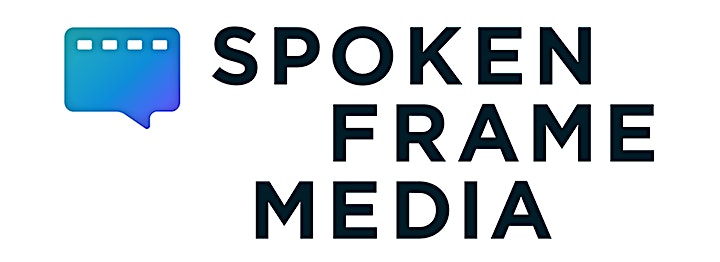Branding is everywhere. It’s in the obvious places—your favorite candy bar, that pair of shoes you love, or the ad you skipped on YouTube.
But it also extends beyond physical products, even concepts like science.
In the case of science, the way it’s perceived by the public doesn’t always match how scientists or science enthusiasts view it. And that disconnect is a problem that can limit scientific research’s reach and opportunities. It can even negatively affect the public at large. As the title of the famous talk that Google co-founder Larry Page gave to the American Association for the Advancement of Science goes – “Science Has a Marketing Problem.”
This was the central focus of UW-Madison Assistant Professor Todd Newman’s presentation at AMA-Madison’s Bright Beginnings event on September 10, 2024.
Professor Newman not only explained the challenge science faces when marketing itself to the public but also the inner workings of this scientist-to-public relationship, which can be understood through classic branding frameworks.
Keep reading or check out the video below to get three key takeaways from the presentation, plus actionable tips on how you can apply them to your own branding efforts.
3 Takeaways Marketers Can Learn from the Branding of Science
1. Understand How Your Audience Perceives You
In his work within the Department of Life Sciences Communication at UW-Madison, Professor Newman’s research focuses on US public opinion related to science and emerging technology. In research he’s done with his colleagues, he’s asked both scientists and the public “what do you think of when you hear the word science?”
The biggest takeaway, in short, was that:
- The public overwhelmingly answered “hope.”
- The scientists sometimes answered with hope but far more often answered “joy” and “excitement.”
This disconnect has been found to be largely because scientists are process-minded, enjoying the process and having a deep interest in what they study. And while there are members of the public who share this excitement about science despite not working in it, many more individuals feel hope because there’s an emotional reward in the idea of a future pay-off. These individuals see science as a tool to make their lives better or make society better, first and foremost – the exciting nature of the process prior to discovery simply isn’t at the forefront of their minds.
Professor Newman explained that understanding the differences in these perceptions of science is crucial to improving the branding of science for the general public.
This difference in perception offers a crucial branding insight: how your brand is viewed from the outside isn’t always the same as how you see it internally. This also extends to the products and services your organization provides – you may understand it comprehensively and see the value it provides to your audience.
Still, your audience may not see it the same way, and as a result, they may miss out on the benefits. And that applies to everything from the quality of life improvements that scientific research can offer to the convenience that products like smart technology can offer.
✅ Tip for marketers: Take a step back and consider how your audience truly perceives your brand. What emotions does your brand evoke? Are they aligned with what you want to convey? You can find out by conducting customer surveys, focus groups, or even analyzing social media sentiment. The better you understand your audience’s perception, the more effectively you can tailor your messaging to align with their expectations and desires and even begin to shape them.
To circle back to the concept of “hope,” it’s also worth identifying what your audience is hoping for when they interact with your brand. Do their goals lie with convenience? A sense of belonging? To be tuned into the next best thing? Once you know what your audience is hoping for, you can craft your messaging to speak directly to those hopes and even shape your product and service offerings around these ideals.
2. Your Competition Isn’t Always Who You Think
In science, it’s easy for researchers to forget they’re not just competing for attention against other scientific concepts—they’re also competing with a barrage of competing messages from various sources, all fighting to get the public’s interest and support. That might include entertainment, politics, and other high-engagement content. Professor Newman emphasized the importance of recognizing this competition and strategically positioning your brand, science or otherwise, to gain that interest and support.
✅ Tip for marketers: The same applies to your brand. Think beyond your immediate competitors and recognize the wider landscape you’re operating in. What other messages or distractions might be pulling your audience’s attention away from you? This will help you position your brand in a way that sets your brand apart from similar offerings.
3. Trust and Authenticity Go Hand in Hand
Even as trust in institutions, business leaders, large businesses, and authority figures has declined, data has shown that scientists, the military, and medical doctors have remained some of the most trusted actors. But that trust can be fragile, especially when science is used in a misleading way, such as in the marketing of beauty products or supplements making false claims. This is what Professor Newman referred to as the commoditization of science. And the trouble is, when the public starts to doubt the authenticity of a message, their trust erodes.
✅ Tip for marketers: Authenticity is key in branding. Don’t overpromise, and make sure your messaging reflects reality. More broadly, focus on transparency and honesty in your marketing efforts – that’s the authenticity that will foster long-term trust.
Make Science (or Your Brand) Personal
One of the most interesting takeaways from the presentation was how science, despite being a field driven by facts and data, is still incredibly personal to different groups of people. Whether it’s an emotional connection to a future outcome or having a symbolic affiliation with a scientific movement one feels excited to support, branding—whether for science or business—is ultimately about creating personal connections.
As marketers, it’s worth asking ourselves how we can make our brand more personal for our audience. How can we speak to their hopes, values, and everyday lives? How can we optimize our business operations and offerings to better meet those needs, too? When branding and business at large feel personal, they resonate.
Thank you to our sponsor(s)
About the Venue
MYArts is a dedicated and purpose-built youth arts center in Madison, WI for young people to inspire and be inspired, discover the arts, make connections, and explore their creativity. It’s located on 1055 E Mifflin St, Madison, WI 53703.
About the Author
Kara Martin, Senior Content Creator at Naviant, specializes in written B2B content, from case studies to blogs and beyond. She transforms complex technical information into compelling, data-driven content that helps organizations turn their digital transformation goals into a reality.





